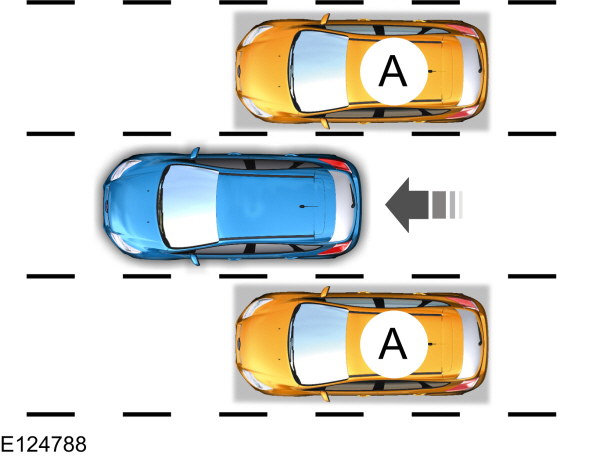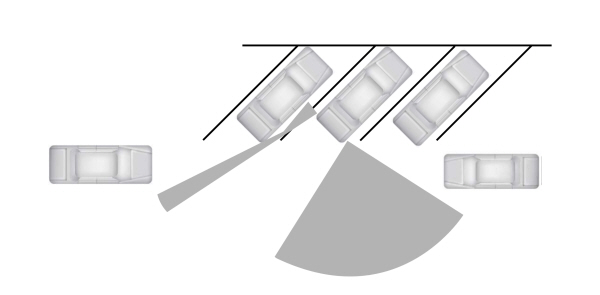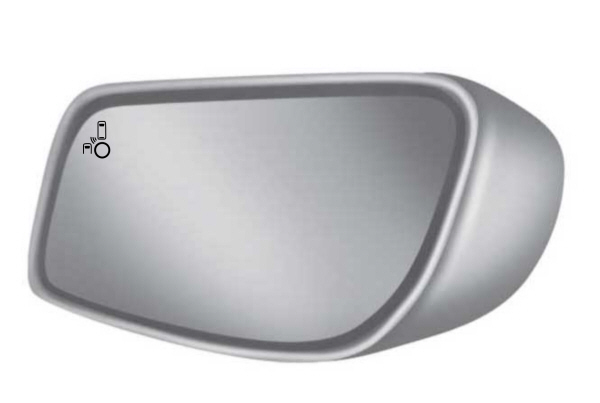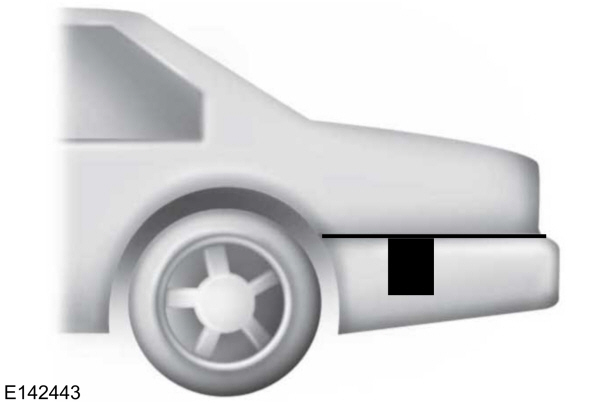This view of the Owner’s Manual contains the very latest information, which may vary slightly from the printed Owner’s Manual originally provided with your vehicle. It may also describe content that is not on or operates differently on your vehicle. Please consider the Owner’s Manual originally provided with your vehicle as the primary source of information for your vehicle.

The information contained in this publication was correct at the time of release.In the interest of continuous development, we reserve the right to change specifications, design or equipment at any time without notice or obligation.No part of this publication may be reproduced, transmitted, stored in a retrieval system or translated into any language in any form by any means without our written permission.Errors and omissions excepted.
Copyright © 2024 Ford Motor Company
Blind Spot Information System





Blind Spot Information System (BLIS®) with Cross Traffic Alert (If Equipped)
 WARNING:
Do not use the blind spot information system as a replacement for using the interior and exterior mirrors or looking over your shoulder before changing lanes. The blind spot information system is not a replacement for careful driving.
WARNING:
Do not use the blind spot information system as a replacement for using the interior and exterior mirrors or looking over your shoulder before changing lanes. The blind spot information system is not a replacement for careful driving. |

BLIS aids you in detecting vehicles that may have entered the blind spot zone (A). The detection area is on both sides of the vehicle, extending rearward from the exterior mirrors to approximately
9.8 ft (3 m) beyond the bumper. The system alerts you if certain vehicles enter the blind spot zone while driving.
Cross traffic alert warns you of vehicles approaching from the sides when the transmission is in reverse ®).
Note:
BLIS is not designed to prevent contact with other vehicles or objects; or to detect parked vehicles, people, animals or infrastructure (for example, fences, guardrails or trees). It is designed to alert the driver to vehicles in the blind zones.
Note:
When a vehicle passes quickly through the blind zone, typically fewer than two seconds, the system does not trigger.
Using the Systems
BLIS turns on when the vehicle is started and is driven forward above
5 mph (8 km/h); it remains on while the transmission is in drive (D) or neutral (N). If shifted out of drive (D) or neutral (N), the system enters cross traffic alert mode. Once shifted back into drive (D), BLIS turns back on when the vehicle is driven above
5 mph (8 km/h).
Note:
BLIS does not function in reverse ®) or park (P) or provide any additional warning when a turn signal is on.
Note:
Cross traffic alert detects approaching vehicles from up to
45.9 ft (14 m) away though coverage decreases when the sensors are blocked. Reversing slowly helps increase the coverage area and effectiveness.
 WARNING:
Do not use the cross traffic alert system as a replacement for using the interior and exterior mirrors or looking over your shoulder before reversing out of a parking space. The cross traffic alert system is not a replacement for careful driving.
WARNING:
Do not use the cross traffic alert system as a replacement for using the interior and exterior mirrors or looking over your shoulder before reversing out of a parking space. The cross traffic alert system is not a replacement for careful driving. |

In this first example, the left sensor is only partially obstructed; zone coverage is nearly maximized.

Zone coverage also decreases when parking at shallow angles. Here, the left sensor is mostly obstructed; zone coverage on that side is severely limited.
System Lights and Messages

The BLIS and cross traffic alert systems illuminate a yellow alert indicator in the outside mirror on the side of the vehicle the approaching vehicle is coming from.
Note:
The alert indicator dims when nighttime darkness is detected.
Cross traffic alert also sounds an audible warning and a message appears in the information display indicating a vehicle is coming from the right or left. Cross traffic alert works with the reverse sensing system which sounds its own series of tones. See
Parking Aid.
System Sensors
Note:
It is possible to get a blockage warning with no blockage present; this is rare and known as a false blockage warning. A false blocked condition either self-corrects or clears after a key cycle.

The system uses radar sensors which are located behind the bumper fascia on each side of your vehicle. Do not allow these areas to become obstructed by mud, snow or bumper stickers, as this can cause degraded system performance.
If the system detects a degraded performance condition, a message warning of a blocked sensor or a message warning of low visibility will appear in the information display and the alert indicator illuminates in the appropriate mirror(s). The information display warning can be cleared but the alert indicator remains illuminated.
When the blockage is removed, the system can be reset in two ways:- when at least two objects are detected while driving, or
- turn the ignition from on to off, then back on.
If the blockage is still present after the key cycle, the system senses again that it is blocked after driving in traffic.
| Reasons for messages being displayed | |
|---|---|
| The radar surface is dirty or obstructed | Clean the fascia area in front of the radar or remove the obstruction. |
| The radar surface is not dirty or obstructed | Drive normally in traffic for a few minutes to allow the radar to detect passing vehicles so it can clear the blocked state. |
| Heavy rainfall/snowfall interferes with the radar signals | No action required. The system automatically resets to an unblocked state once the rainfall or snowfall rate decreases or stops. Do not use BLIS or cross traffic alert in these conditions. |
System Limitations
The BLIS and cross traffic alert systems do have their limitations; situations such as severe weather conditions or debris build-up on the sensor area may limit vehicle detection.
The following are other situations that may limit the BLIS:- Certain maneuvering of vehicles entering and exiting the blind zone.
- Vehicles passing through the blind zone at very fast rates.
- When several vehicles forming a convoy pass through the blind zone.
- Adjacently parked vehicles or objects obstructing the sensors.
- Approaching vehicles passing at speeds greater than 15 mph (24 km/h).
- Driving in reverse faster than 5 mph (8 km/h).
- Backing out of an angled parking spot.
False Alerts
Note:
If a trailer is connected to the vehicle the BLIS system may detect the trailer causing a false alert. You may want to turn the BLIS off manually.
There may be certain instances when either the BLIS or cross traffic alert systems illuminate the alert indicator with no vehicle in the coverage zone; this is known as a false alert. Some amount of false alerts are normal; they are temporary and self-correct.
System Errors
If either system senses a problem with the left or right sensor, the BLIS telltale will illuminate and a message will appear in the information display.
All other system faults will only be displayed by a message in the information display.
Switching the Systems Off and On
One or both systems can be switched off temporarily by using the information display control. See
General Information.
When the BLIS is switched off, you will not receive alerts and a telltale illuminates in the information display.
Note:
The CTA system always switches on whenever the ignition is switched on. However, the BLIS system will remember the last selected on or off setting.
One or both systems cannot be switched off when MyKey is used. See
General Information.
